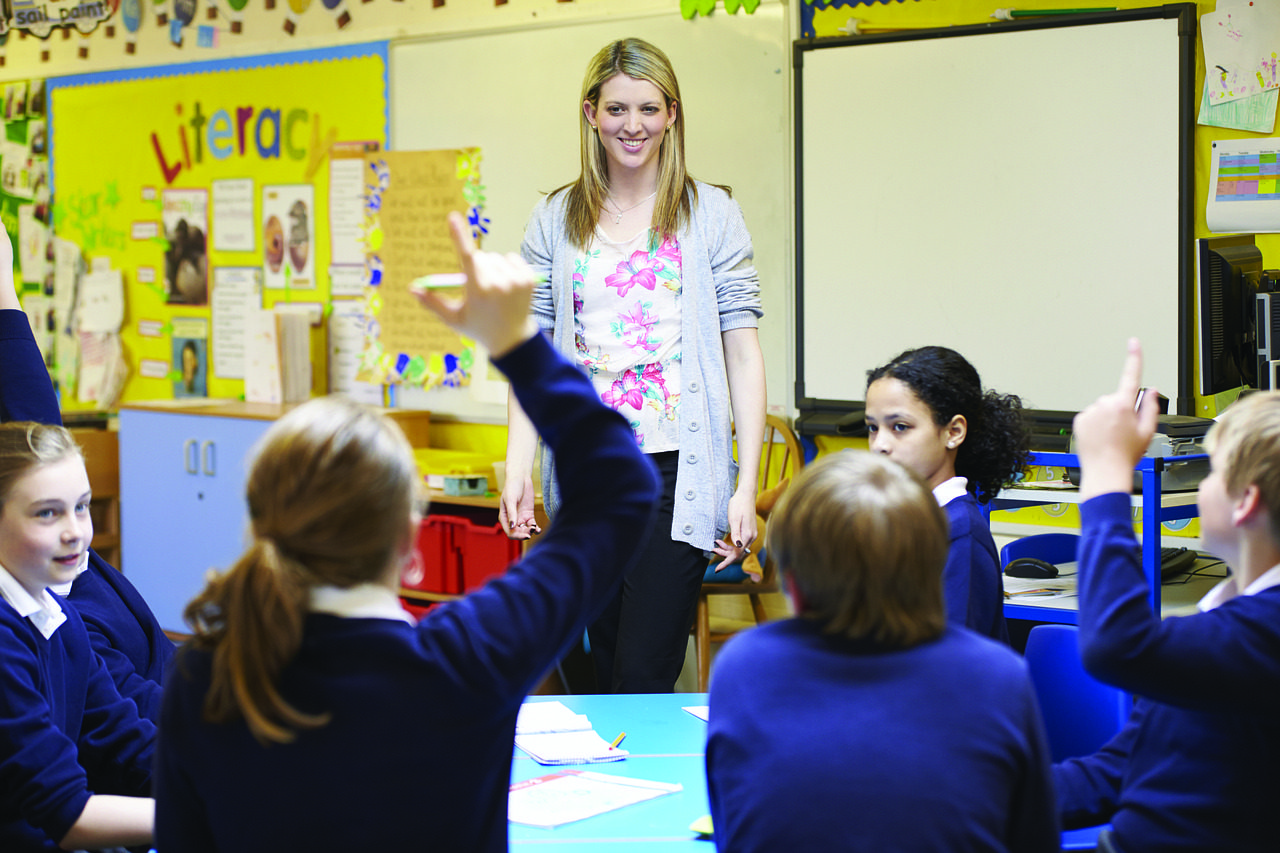Well, you did it! You made it through another year of teaching, and a pretty crazy one at that. From transitioning to an online learning model to navigating the daily stress of a global pandemic, you’ve managed to overcome what will likely be considered one of the most difficult years of teaching in history. Frankly, that “World’s Best Teacher” mug you received from your students last year has never felt more deserved.
But enough with the self-reflection. It’s time to officially put 2020 behind us and look ahead to 2021. What personal and professional goals are you setting for yourself next year? Whether you want to find teaching resources to enhance student learning or strive for a better work-life balance, here are eight New Year’s resolutions for teachers to consider.
Table of Contents
1. Get organized.
If your current organization system can only be described as “where-the-heck-did-I-put-that,” it’s probably time to rethink your organization strategy. Cleaning up your desk — whether at home or school — is always a good place to start. Use trays, bins, and drawer compartments to keep the clutter on your desk to a minimum. You can make sure that everything stays organized by blocking off 10 minutes each Friday to organize and tidy up. Your future self will thank you for it.
2. Stay active during the school day.
When you’re a teacher, finding time to exercise can be fairly difficult. If hitting the gym before work isn’t doable for you, try to be more active in the classroom. For example, you could stand up and walk around while giving lectures or take walks at lunchtime. You could also get a standing desk to reduce the amount of time you spend sitting. Don’t be afraid to invite your students to get up and stretch with you, either. Both teachers and students can benefit from periodic movement.

3. Help students prepare for the future.
Every student has the potential to succeed after high school, but some need more help than others. This year, work on preparing your students for the future. Help them apply for college scholarships, explore different career paths, and research post-secondary institutions (colleges, universities, trade schools, etc.). Teach “soft skills” that will help them in the real world, like critical thinking and communication skills. With a nudge in the right direction, you can encourage them to put their knowledge to good use and steer them towards post-graduation success.
4. Try at least one new tech tool.
Remember that new education tech tool that you’ve meant to try for ages? This is the year you finally give it a shot. Pick a tool that’s been getting lots of positive buzz lately — like Kahoot! or GooseChase — and find out how other teachers are using it. Then, incorporate the tool into your classroom. If it doesn’t work out as planned, experiment with the tool for a few weeks before you give it the boot.
5. Build a sense of community in the classroom.
Now more than ever, students crave human connection and community. In the new year, focus on developing a strong classroom culture where every student feels welcome and like part of a team. One way to do this is by working towards a shared goal. For example, you could set a goal for every student to earn a passing grade on the next exam or quiz. If students achieve the goal, you can reward them by playing JackBox Games or something equally fun.
6. Lend a helping hand to new teachers.
Most teachers will agree that the first year of teaching is the hardest. New teachers often overwork themselves the first year, leading to exhaustion and burnout. If your school doesn’t already have a mentorship program in place, consider reaching out to a new teacher and offering your support and guidance. You don’t need to redo their entire lesson plans or anything. Just help them establish better organization systems (see number one on this list) and gently remind them that taking an entire hour to grade one paper is a sure path to Burnout Land.

7. Practice daily self-care.
This is arguably one of the more challenging New Year’s resolutions for teachers. There is just so much to do as an educator and so little time to do it! But if you want to be the best version of yourself for friends, family, and students, you need to carve out time for yourself. One way to do this is to start and end your day with a guided meditation. Practicing meditation is a great way for teachers to de-stress, which everyone could benefit from right now. Consider using the Headspace app, which is free for all K-12 educators in the U.S., UK, Canada, and Australia.
8. Rethink your teaching style.
Although it may be a new year for everyone, the school year is already half over. This is a good time to assess what’s been working in your classroom and what hasn’t. Do your students do better when you gamify your class? Create new plans that incorporate more gamification into the classroom. Make use of the many teaching resources on the internet and use them to diversify your learning experiences for students.
Consider some of these New Year’s resolutions for teachers and apply them in the new year.
Featured Image by 14995841 from Pixabay




